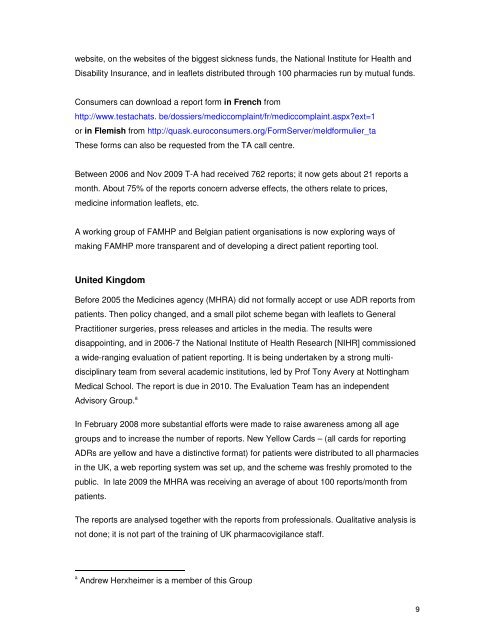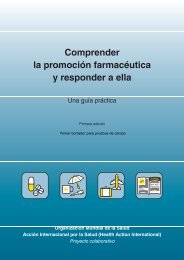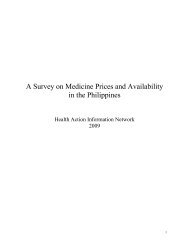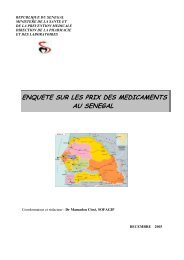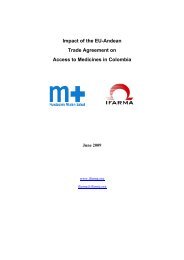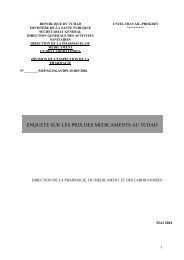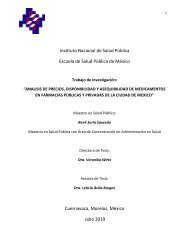Direct Patient Reporting of Adverse Drug Reactions - Cochrane ...
Direct Patient Reporting of Adverse Drug Reactions - Cochrane ...
Direct Patient Reporting of Adverse Drug Reactions - Cochrane ...
Create successful ePaper yourself
Turn your PDF publications into a flip-book with our unique Google optimized e-Paper software.
website, on the websites <strong>of</strong> the biggest sickness funds, the National Institute for Health andDisability Insurance, and in leaflets distributed through 100 pharmacies run by mutual funds.Consumers can download a report form in French fromhttp://www.testachats. be/dossiers/mediccomplaint/fr/mediccomplaint.aspx?ext=1or in Flemish from http://quask.euroconsumers.org/FormServer/meldformulier_taThese forms can also be requested from the TA call centre.Between 2006 and Nov 2009 T-A had received 762 reports; it now gets about 21 reports amonth. About 75% <strong>of</strong> the reports concern adverse effects, the others relate to prices,medicine information leaflets, etc.A working group <strong>of</strong> FAMHP and Belgian patient organisations is now exploring ways <strong>of</strong>making FAMHP more transparent and <strong>of</strong> developing a direct patient reporting tool.United KingdomBefore 2005 the Medicines agency (MHRA) did not formally accept or use ADR reports frompatients. Then policy changed, and a small pilot scheme began with leaflets to GeneralPractitioner surgeries, press releases and articles in the media. The results weredisappointing, and in 2006-7 the National Institute <strong>of</strong> Health Research [NIHR] commissioneda wide-ranging evaluation <strong>of</strong> patient reporting. It is being undertaken by a strong multidisciplinaryteam from several academic institutions, led by Pr<strong>of</strong> Tony Avery at NottinghamMedical School. The report is due in 2010. The Evaluation Team has an independentAdvisory Group. aIn February 2008 more substantial efforts were made to raise awareness among all agegroups and to increase the number <strong>of</strong> reports. New Yellow Cards – (all cards for reportingADRs are yellow and have a distinctive format) for patients were distributed to all pharmaciesin the UK, a web reporting system was set up, and the scheme was freshly promoted to thepublic. In late 2009 the MHRA was receiving an average <strong>of</strong> about 100 reports/month frompatients.The reports are analysed together with the reports from pr<strong>of</strong>essionals. Qualitative analysis isnot done; it is not part <strong>of</strong> the training <strong>of</strong> UK pharmacovigilance staff.a Andrew Herxheimer is a member <strong>of</strong> this Group9


